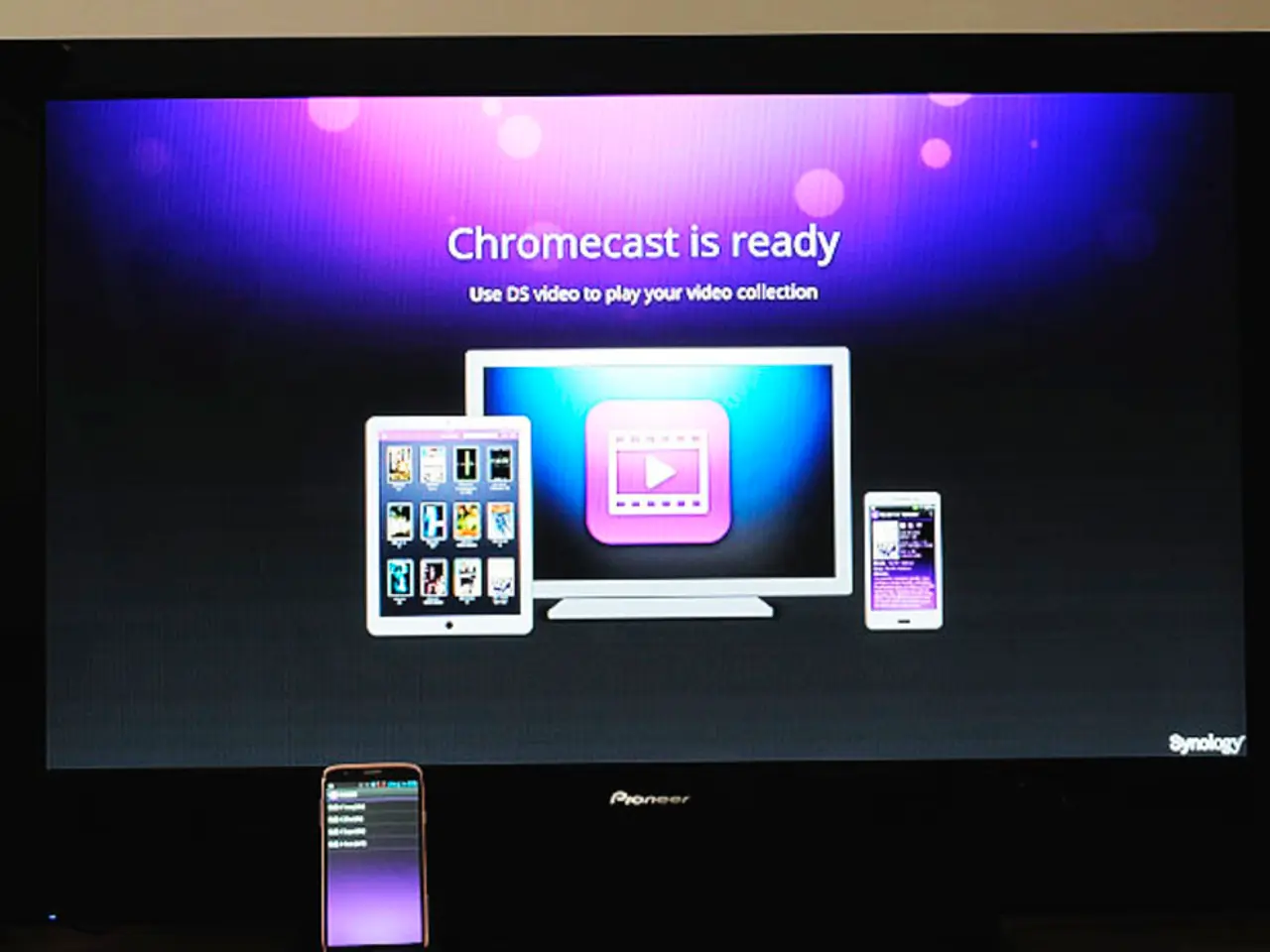Debate: Broadcasting of 5G vs. Next-Generation Television Technology
In the rapidly evolving world of broadcasting, two new standards are making waves: 5G Broadcast and ATSC 3.0 (NextGen TV). Both offer unique advantages and disadvantages when it comes to mobile reception and performance.
Advantages of 5G Broadcast
5G Broadcast, based on LTE/5G cellular technology, is optimized for mobile devices. It boasts more robust reception for moving users, thanks to inherent mobile network designs. Moreover, it can transmit directly to hundreds of millions of 3GPP-compliant smartphones and tablets globally without additional hardware or tuners[3]. By leveraging the vast cellular ecosystem, including smartphones from major manufacturers, 5G Broadcast can integrate seamlessly with existing mobile infrastructure.
Disadvantages of 5G Broadcast
Despite its mobile-friendly nature, 5G Broadcast has lower bandwidth efficiency compared to ATSC 3.0. It demonstrates significantly higher spectral efficiency and can achieve higher throughput in both fixed indoor and mobile contexts, allowing more data or higher quality video per MHz of spectrum[1][3]. Furthermore, 5G Broadcast is newer and less widely deployed for traditional over-the-air TV broadcasting.
Advantages of ATSC 3.0
ATSC 3.0 uses advanced modulation (OFDM with LDPC FEC) allowing bitrates up to 57 Mbps on 6 MHz channels, leading to efficient fixed indoor and mobile reception, including UHD video delivery with scalable layers[1][3]. ATSC 3.0 also includes a bootstrap signal that enables receivers to identify signals and adapt to future modulation profiles, supporting upgrades without hardware replacement[1]. Additionally, NextGen TV has already been adopted widely in the US and internationally, enabling a large installed base of stations and devices.
Disadvantages of ATSC 3.0
ATSC 3.0 signals are not part of the worldwide 3GPP cellular standards, meaning typical smartphones and tablets cannot directly receive NextGen TV broadcasts without special tuners or adapters[3]. While it supports mobile reception, ATSC 3.0 is less inherently mobile-optimized than cellular-based 5G Broadcast networks. There are also concerns about Digital Rights Management (DRM) complicating open access to broadcasts on ATSC 3.0 devices[4].
A Comparative Summary
| Aspect | 5G Broadcast | ATSC 3.0 (NextGen TV) | |-------------------------|---------------------------------------|-----------------------------------------------| | Mobile Reception | Stronger, native 3GPP mobile support | Good but not native on smartphones | | Spectral Efficiency | Lower bandwidth efficiency | Higher spectral efficiency, up to 57 Mbps | | Device Compatibility| Works directly on 3GPP smartphones | Requires special tuners or compatible devices | | Future-proofing | Integrated with 5G cellular ecosystem | Bootstrap signal allows future upgradeability | | Deployment | Newer, less deployed for traditional TV| Widely deployed globally and in the US | | DRM & Accessibility | Less reported DRM issues | DRM can restrict content access on some devices|
In conclusion, 5G Broadcast excels in mobile device compatibility and mobility performance, while ATSC 3.0 offers higher bandwidth efficiency and more established deployment for TV broadcasting, though it requires additional hardware for mobile reception[1][3][4][5]. As the broadcasting industry transitions from ATSC 1.0 to a next-generation standard, the choice between 5G Broadcast and ATSC 3.0 will depend on the specific needs and priorities of broadcasters and consumers alike.
Sources: [1] ATSC 3.0 vs 5G Broadcast: A Comparative Analysis [2] 5G Broadcast: The Future of Terrestrial Broadcasting [3] 5G Broadcast vs ATSC 3.0: A Comparative Analysis [4] Digital Rights Management (DRM) and ATSC 3.0 [5] ATSC 3.0 Deployments Around the World
- The rapidly evolving world of broadcasting is utilising two new standards: 5G Broadcast and ATSC 3.0 (NextGen TV), both offering unique benefits and drawbacks in mobile reception and performance.
- 5G Broadcast, based on LTE/5G cellular technology, is optimized for mobile devices, providing stronger reception for users on the move due to its mobile network designs.
- By leveraging the vast cellular ecosystem, including smartphones from major manufacturers, 5G Broadcast can integrate seamlessly with existing mobile infrastructure.
- Despite its mobile-friendly nature, 5G Broadcast has lower bandwidth efficiency compared to ATSC 3.0, demonstrating less efficient use of spectrum.
- ATSC 3.0 uses advanced modulation techniques, allowing it to achieve up to 57 Mbps on 6 MHz channels, leading to efficient fixed indoor and mobile reception, including UHD video delivery with scalable layers.
- The Federal Communications Commission (FCC) and National Association of Broadcasters (NAB Show) have been actively discussing the future of media technology, with ATSC 3.0 being a key topic in their discourse.
- IP streaming services like OTT (over-the-top) platforms have also gained traction in the media landscape, but their financial sustainability, content delivery challenges, and potential impact on traditional broadcasters are subjects of ongoing debate.
- As the broadcasting industry adopts the next-generation standard, driving factors for broadcasters and consumers include spectrum efficiency, mobile compatibility, device compatibility, future-proofing, deployment timeline, Digital Rights Management (DRM) policies, and overall accessibility.
- In the realm of sports broadcasting, 5G Broadcast and ATSC 3.0 could potentially revolutionize how live sports are transmitted, opening opportunities for enhanced fan experiences, real-time data integration, and more immersive viewing options.




